After our cattle grid sleepover when we had left Windhoek, we took it slow… real slow: slow wake-up, slow cup of coffee, slow packing up. And… we continued on the dust road over the endless yellow hills dotted with ‘feather duster’ trees. Some sections are almost like a highway, where we can do about 60-80km per hour, but other sections are so rocky or corrugated that we have to slow down to 5-25 km per hour.
As said… we took it slow, made a few stops, saw a bit of cattle in this dry, grassy landscape. It was fascinating to see how the herds (and we presume buck too), in their forever wandering to find good grazing, trample a trail pattern on the hill sides that looks like expanded mesh.
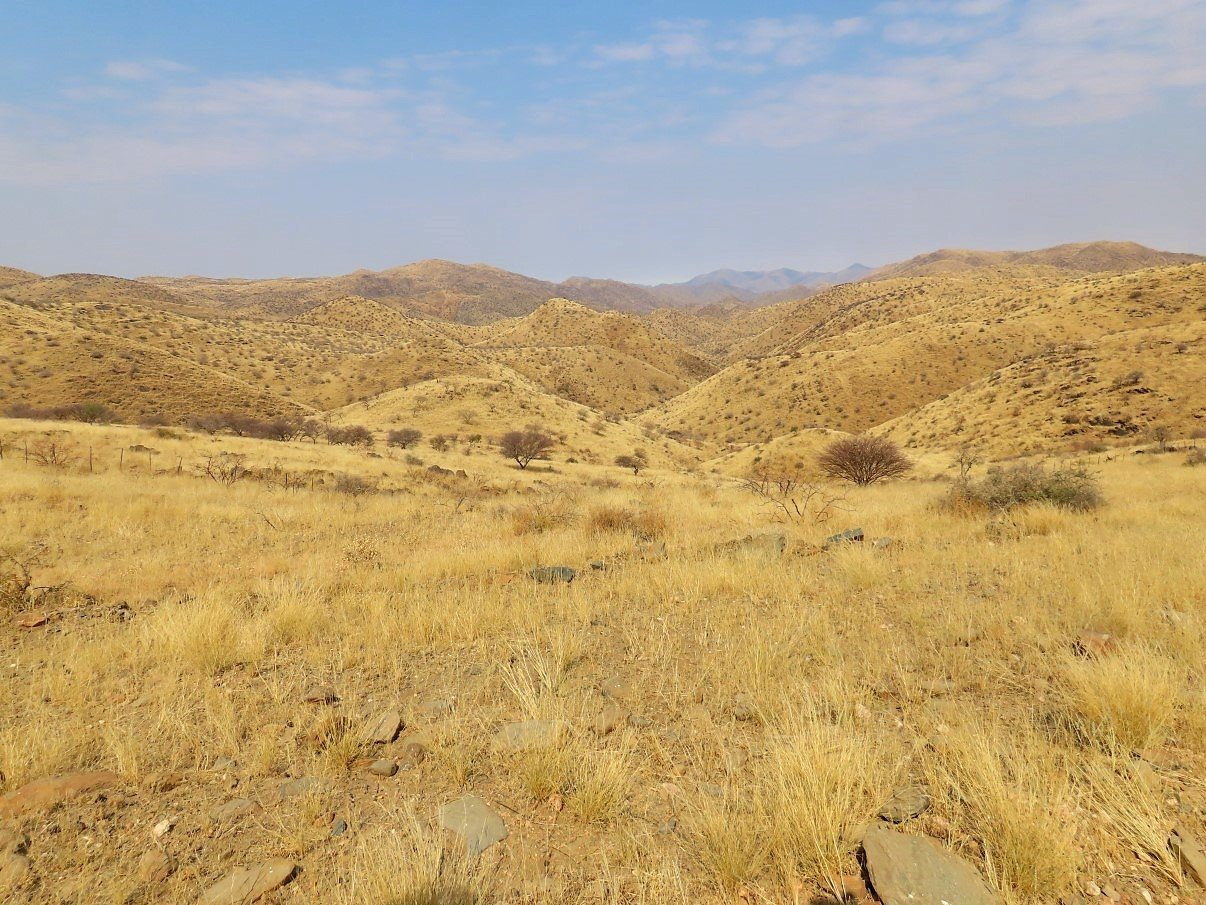
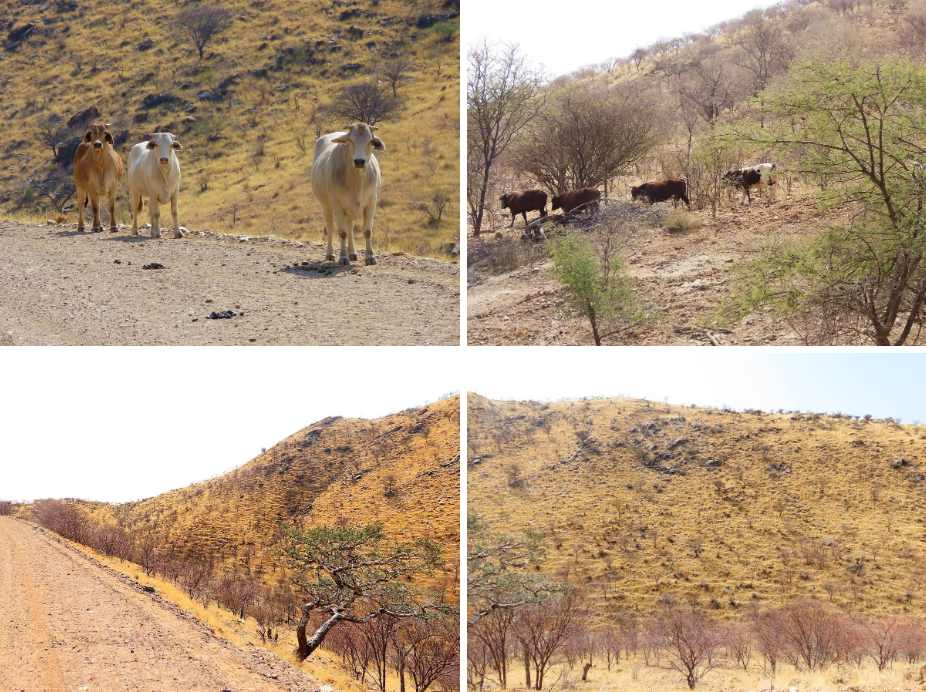
Somewhere along the road we passed what we presume must be the most scenic ‘throne’ in the world: a toilet in the middle of this endless landscape, under a paperbark tree, with uninterrupted views to die for. Unfortunately the distance between seat and waste drum was too big, resulting in toilet paper being blown away before being able to land in the drum. The result was a sad picture: toilet paper all around.
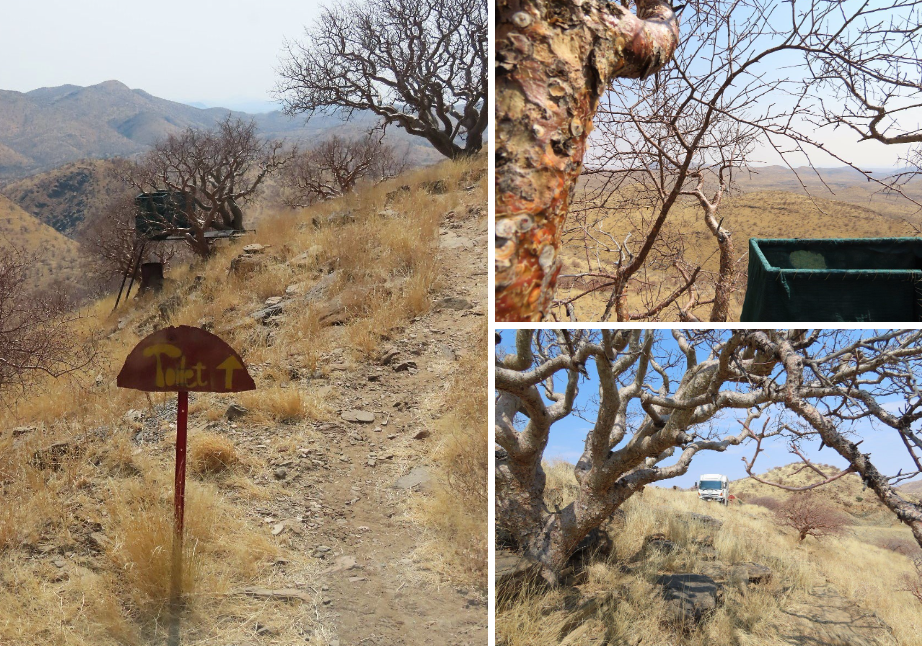
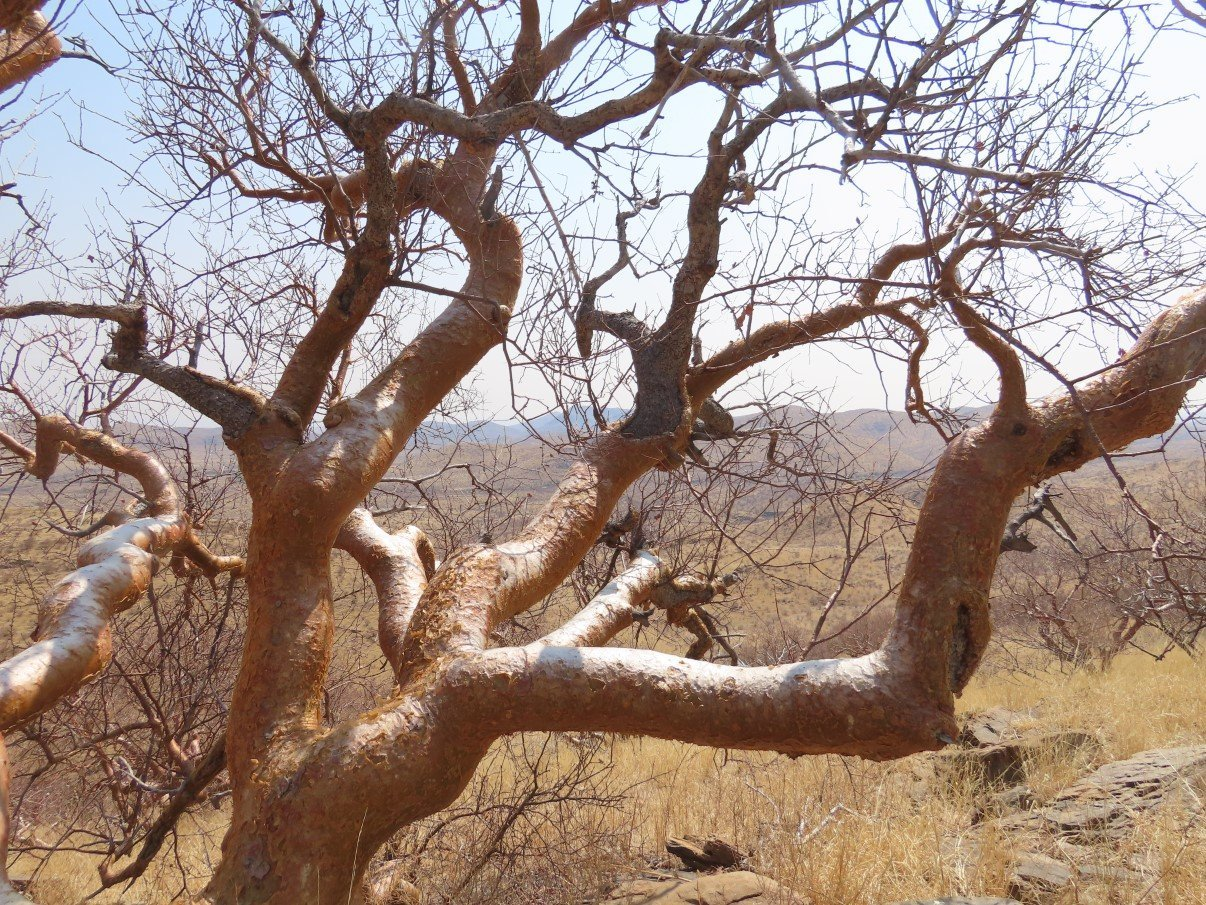
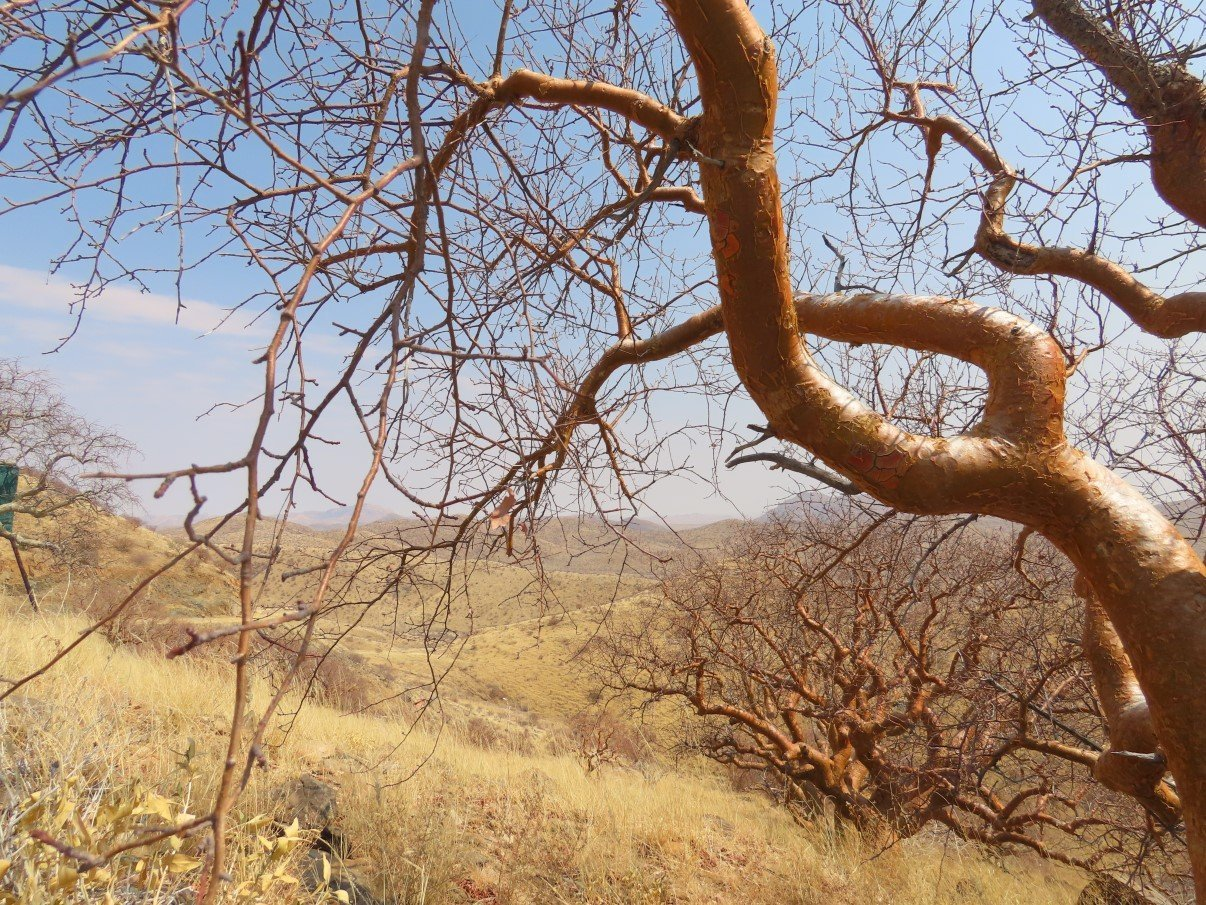
At one stage we saw something moving slowly over the road quite a distance in front of us. When we slowly came to a halt, we saw it was an iguana. He eventually disappeared in a tree and Stefaan got a bit closer to take some video footage. He was obviously not going to move out of the protection of the tree, so we left him in peace and moved on.

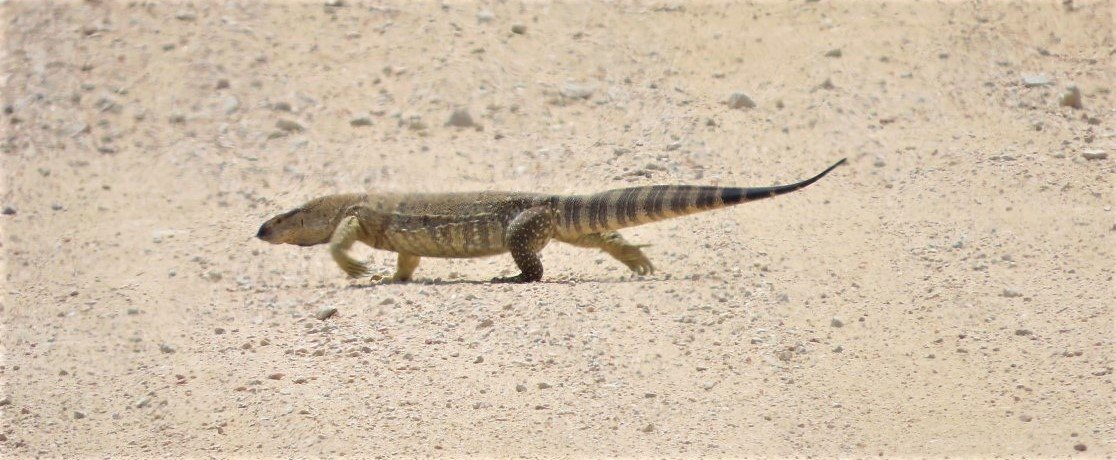
View the clip on Instagram.
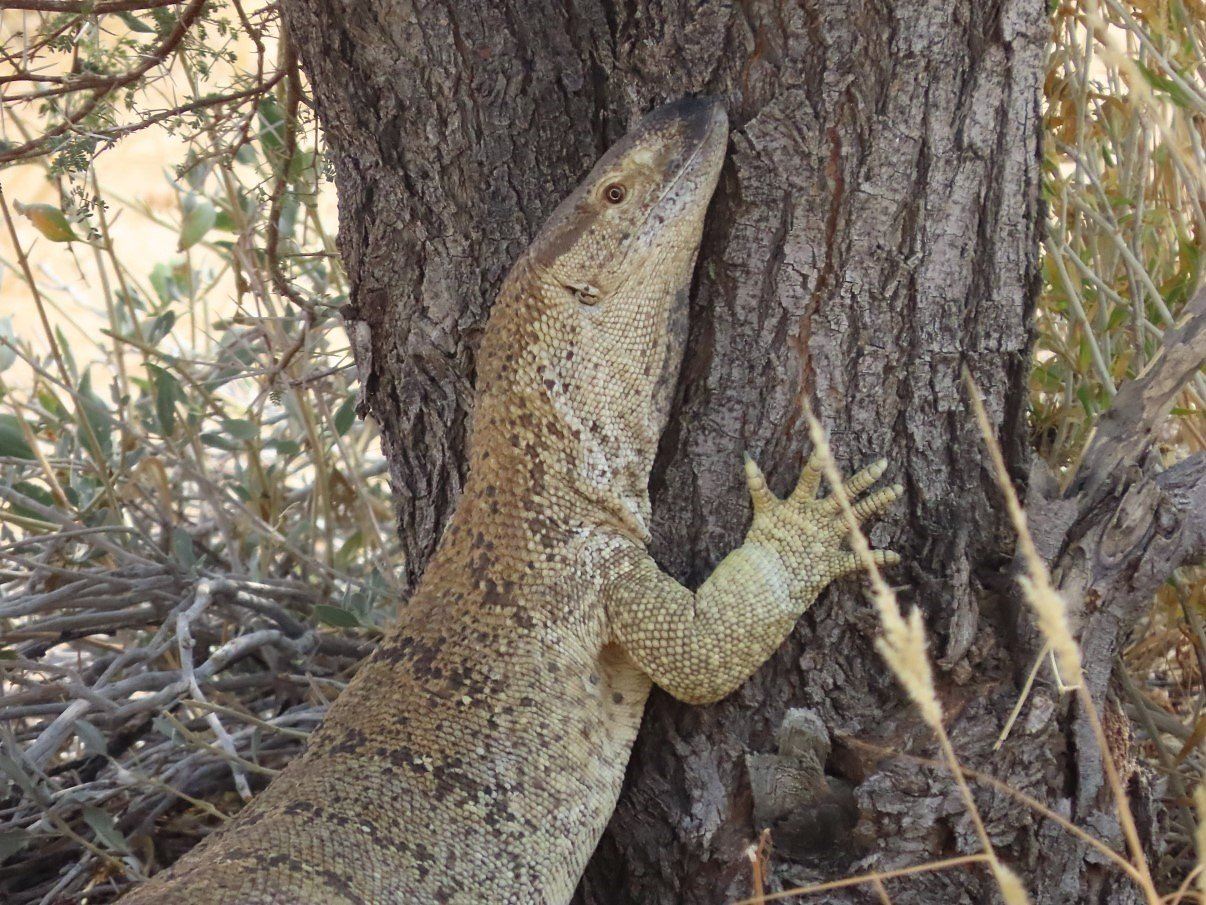
Early afternoon, we turned right towards Karibib. We traveled through a little pile of nice rocky mountains and shortly afterwards we decided to park and call it a day. Stefaan planned to make potjie and knowing that takes a while,… an early camp set-up would be great!
Stefaan went to work to make potjie.
It was indeed a very lazy afternoon: Stefaan reading a book while watching the fire and the potjie and I was sorting photos and writing my diary (otherwise I forget what to write in my blog stories).
We had a beautiful sunset behind the clouds and an incessant chatter of the birds (or perhaps they were crickets?) in the bush around us.
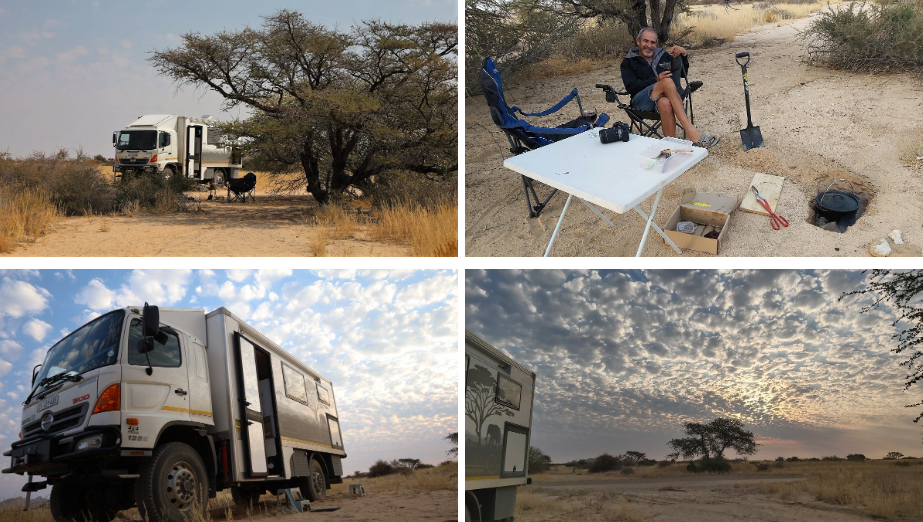
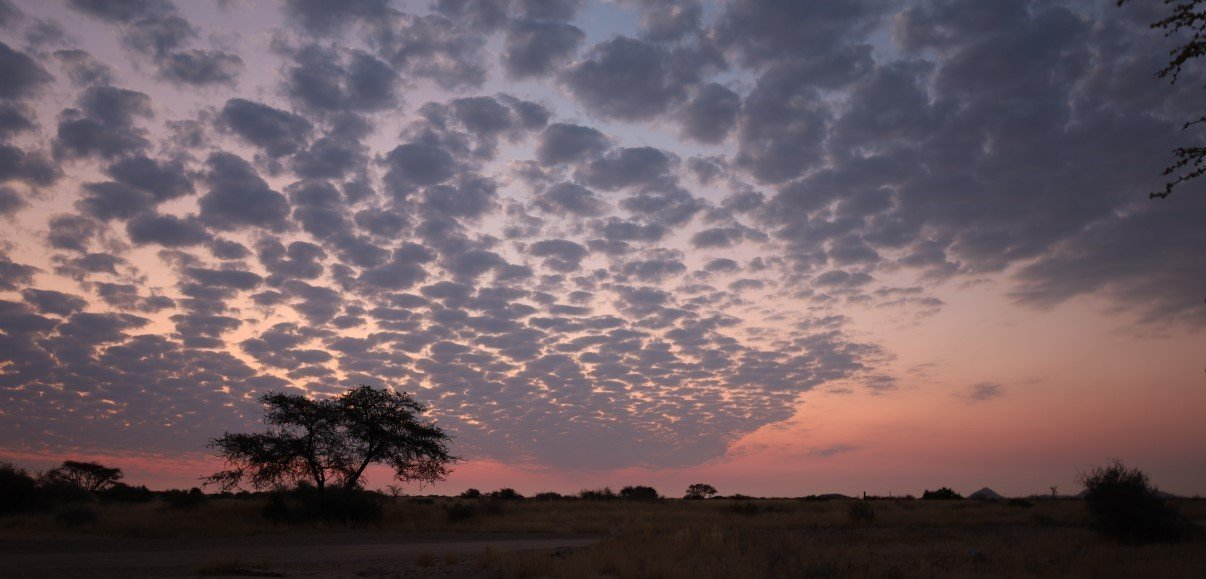
Not a car passed us the whole afternoon or the next morning for that matter
Next morning we were not in a hurry to wake up and have our coffee. It’s the lazy life! Stefaan got a hair cut and then we packed up. Only after an hour or two we saw another car or two. When we looked back to the previous day, we concluded that, even being parked right next to the road, we hadn’t seen a car for almost 22 hours!
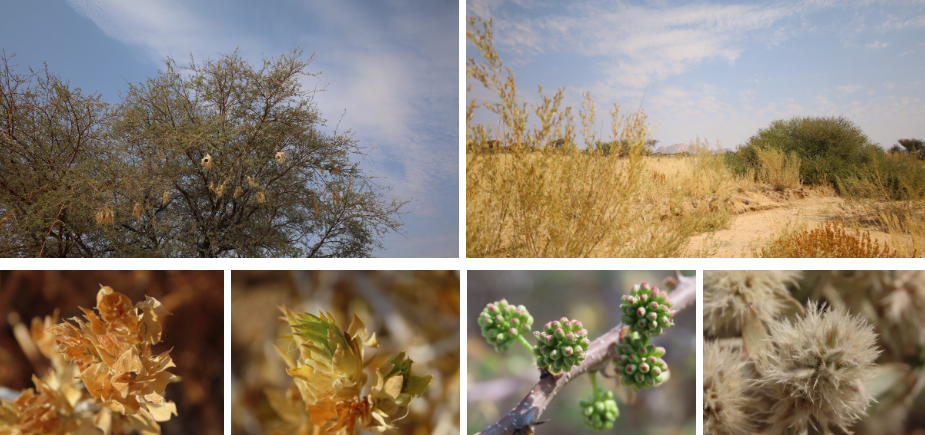
The closer we got to Karibib, we saw mountain sides with bright white and even blueish-white sections cut out. We initially thought it might have been calcium or lime quarries, but when we looked closer with the binoculars, we presumed they were actually marble quarries. When we entered the town a bit later, our presumptions were confirmed: marble was the word! Along the main road we saw several marble merchants and trucks being loaded with big chunks and slabs of marble.
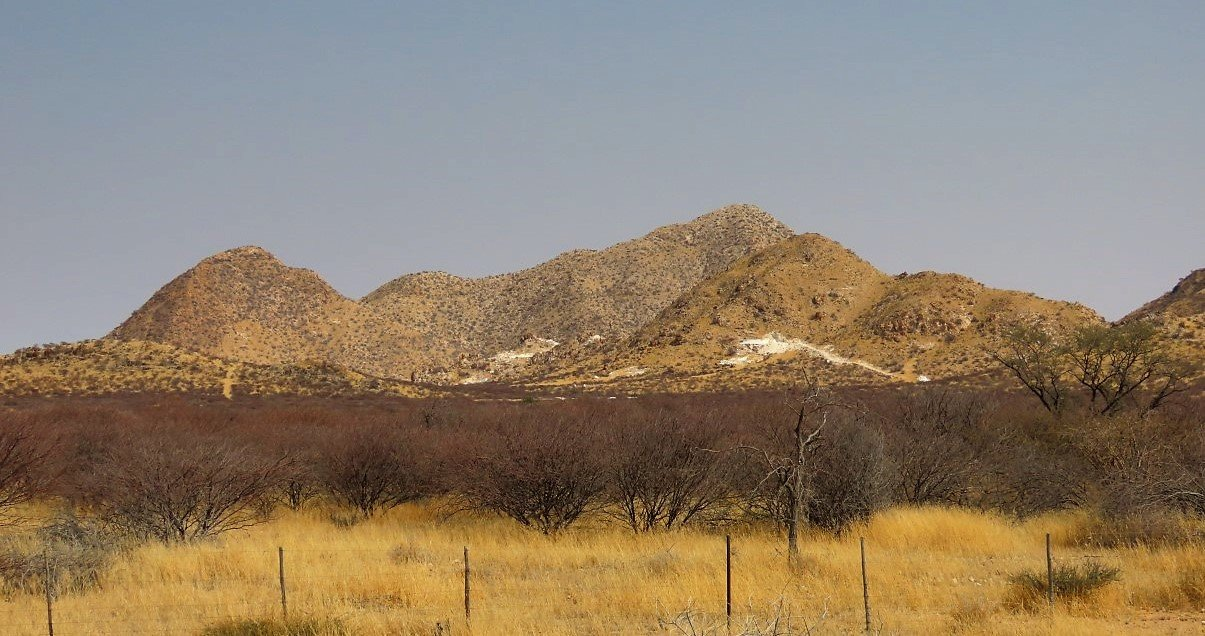
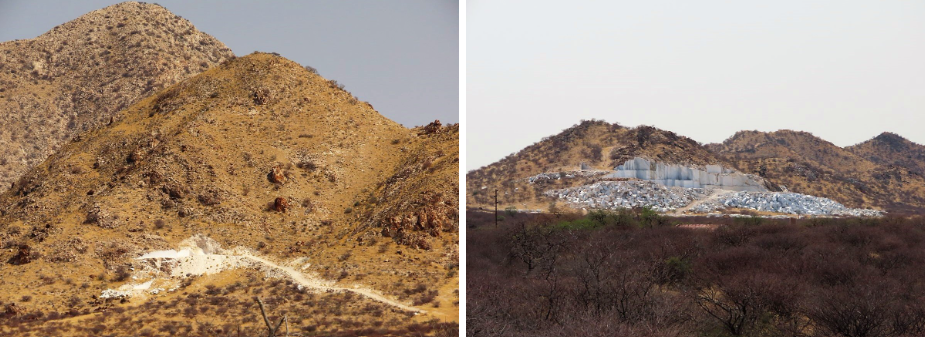
We filled up with diesel in Karibib and when we continued to Omaruru we saw several mountains on this road looking similar to the sliced mountains on the previous section.
We had lunch on a big sandy parking lot just outside of town. This seemed to be a popular spot for meerkats, because the place was riddled with holes and the meerkats had a busy social life.
We left Omaruru and turned left towards the Erongo Mountains.
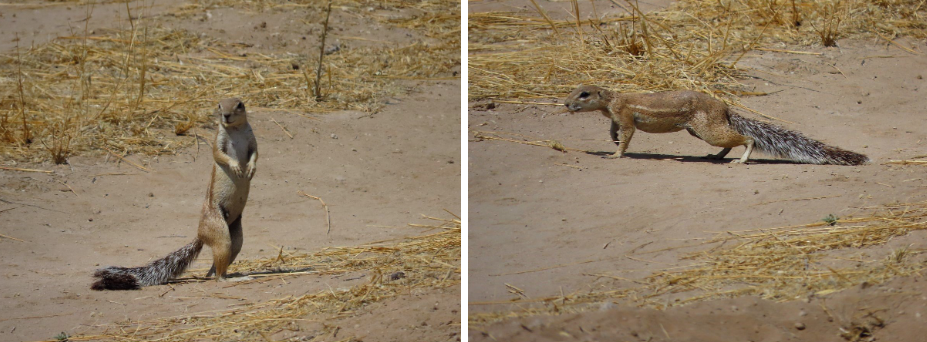
When we entered the Erongo Nature Reserve, we were greeted with signs warning for all sorts of wildlife. Although we did see a giraffe, we didn’t see any of the more elusive and dangerous animals as indicated on the warning sign. By the time we reached the turnoff which we presumed would lead to the Singing Rocks and the Rock Art it was late afternoon. We parked on an open patch next to the road and called it a day.
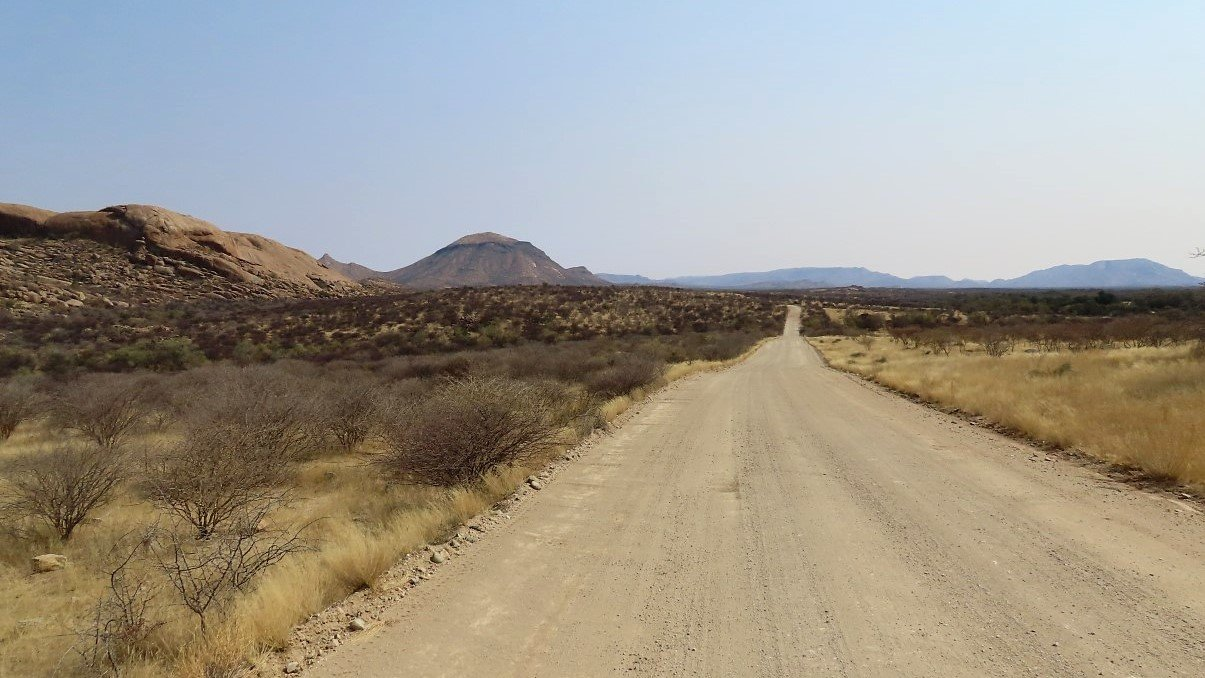
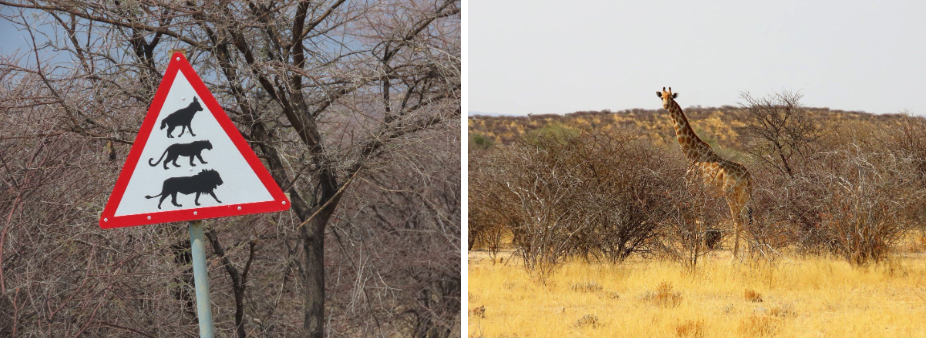
Next morning we started the drive to the rocks and the cave with rock art.
The road was quite bad: very rocky and at certain moments so badly corrugated we almost shook out of our boots. Signage is non existent. There was signage of lodges and farms with the names of the places that we deduced were the Singing rocks and Caves respectively… but no real signage from the main road to “Erongo Singing Rocks” or “Etuka Cave Rock Art” (how we had read it on the Tracks4Africa map).
When we eventually arrived at the last split in the valley, both ways going to separate lodges, we drove through the gate of Erongo Lodge as they advertised the Singing Rocks and Rock Art on their entry board. After a km or so we arrived at the lodge and main house. We initially thought there was nobody around, but the door was open. When we called out, a girl came from the kitchen and after a few words phoned the owner and gave the phone to us. Long story short: the owner and his dad had gone into town to repair a bakkie, wouldn’t be back for another hour or two and for us to see the sites it would cost us R150 pp for each the Rocks and the Cave.
We decided not to wait around. On the way back out of the valley, we stopped at the Etuka main house and there we figured out that the two lodges/farms are family, so the same applied here: no one available to take us and same fees. For the rock art we were even told to wait till about 3pm in the afternoon because of the sunshine. (it was about 12pm). So we decided to skip this adventure altogether and move on.
It was a bit of a disappointment. Especially when the fees are on the high side, you expect availability. To have to sit and wait around for the owner to be back before you would be able to get to these special places, was not really what we expected.
We left the valley and continued on the main dust road. We stopped for a coffee break a bit further and seeing that these hills seem to contain gem stones, we sat at the roadside in our big “scratch patch” hoping to find some nice stones.
On the map we had seen that there is a Living San Museum just a bit further down the road. We have been to Indigenous Cultural Villages many years before in South Africa and discussed if we would give it a go or not. But seeing that the San are indeed the oldest inhabitants of this part of the world, it would be interesting to see their life for real. So that was to be our next stop.
And wow, was that a really pleasant surprise! As with several experiences in the last year, this is the other and positive side of the Covid19 coin: very few tourists! (same at Ais Ais, Kolmanskop and Sossusvlei). Our guide, Demi, said that before Covid19 there would be bus loads of tourists arriving while now it was only us and one other car on one of the (two) campsites. Which meant that we had the guide and his Khoisan speaking nephew… and a following of about 10 San children… all to ourselves! Which made it so much nicer as we could really chat with them and ask a million questions. The first afternoon we went on a bush walk, where they showed us tracking, the trees they use for making their equipment and their poisons, how to make fire (way faster than us using blitz) and showed us the grand landscape they look upon from high up on the big boulders.
They showed us also some rock art on the high boulders: some were really well preserved, some unfortunately not due to being exposed too much to the sun.
Even though they do send kids and grandkids to school and they lead a reasonably ‘modern’ life in other parts of Namibia, they rotate groups to this (and other) cultural sites, to show tourists San life in reality, in an effort to preserve their heritage. Besides the traditional skills like making their own equipment (bow and arrows), know their poisons, know their roots and berries, Demi was honest enough to acknowledge that they now get help from farmers: e.g. steel for arrow points, water, etc. He was also honest about the fact that the farmer supported this project because there are rock paintings on his property. He said that if there wouldn’t have been rock paintings, the farmer possibly might not want to let them stay on this patch of land.
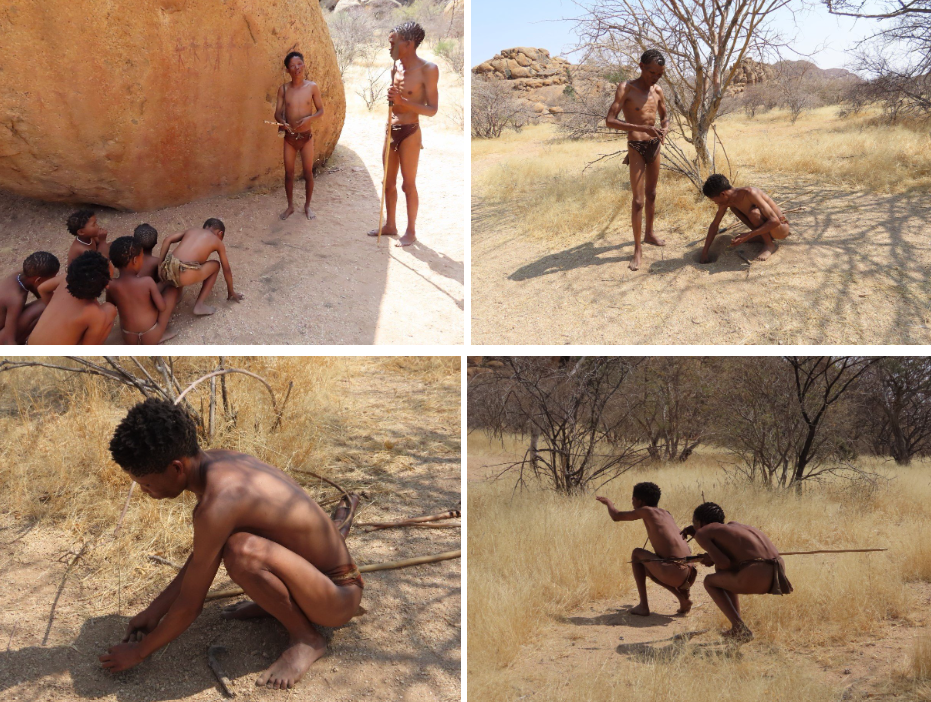
See more on the Youtube video below
View these 2 clips on Instagram
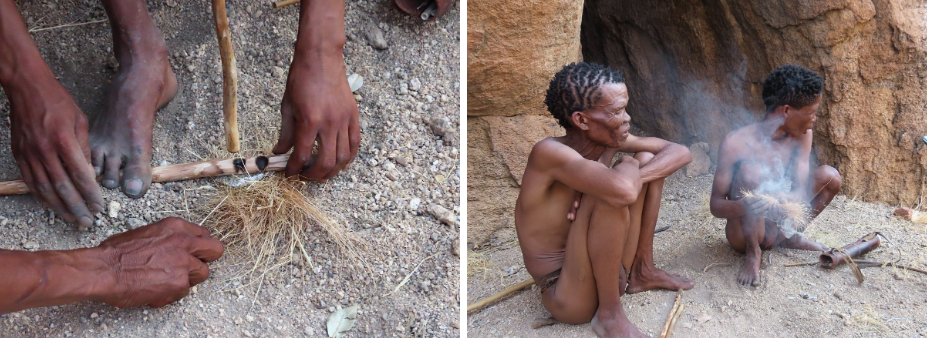
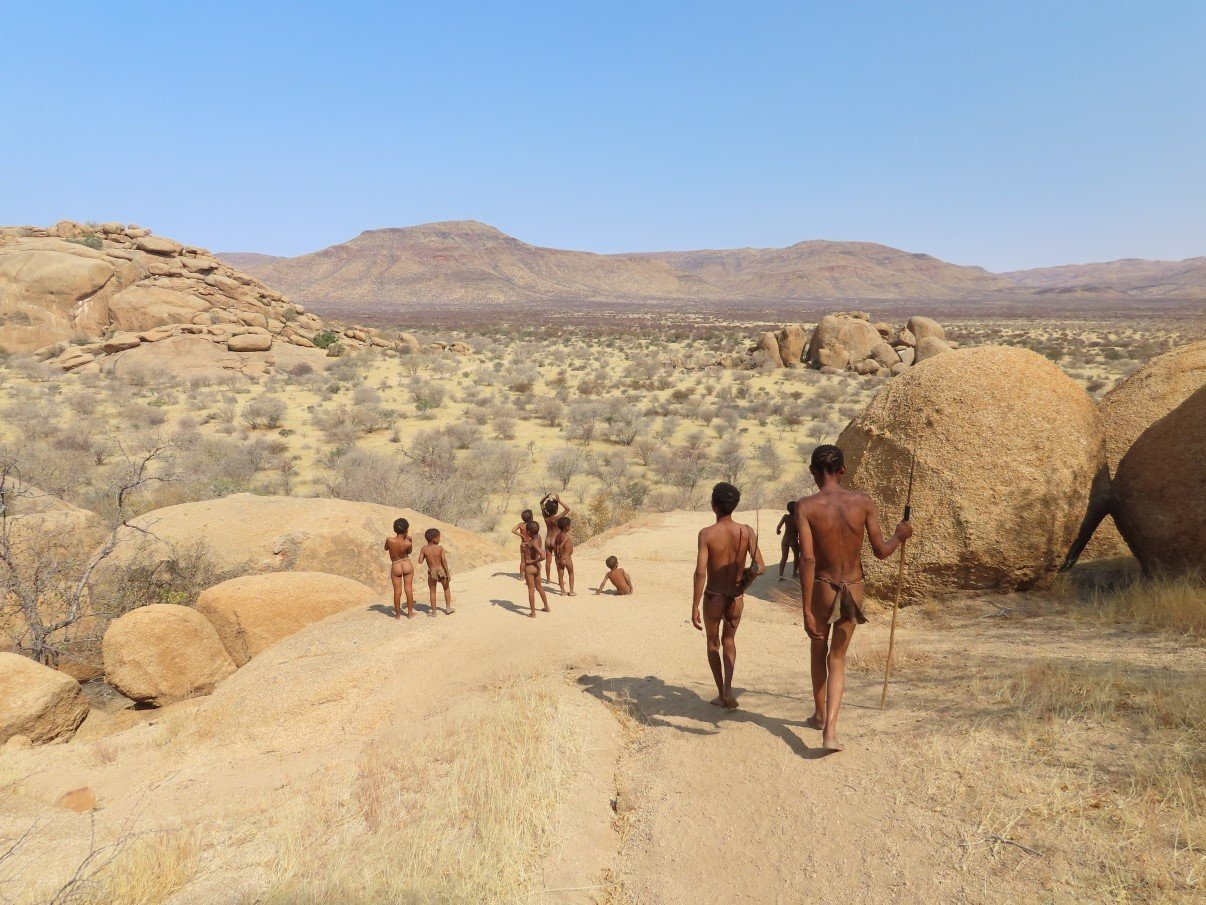
We stayed the night in Owl Camp (seemingly 1 of only two campsites ) and it was surprisingly well maintained. The sand was freshly swept and the facilities were clean and well maintained… bush style.
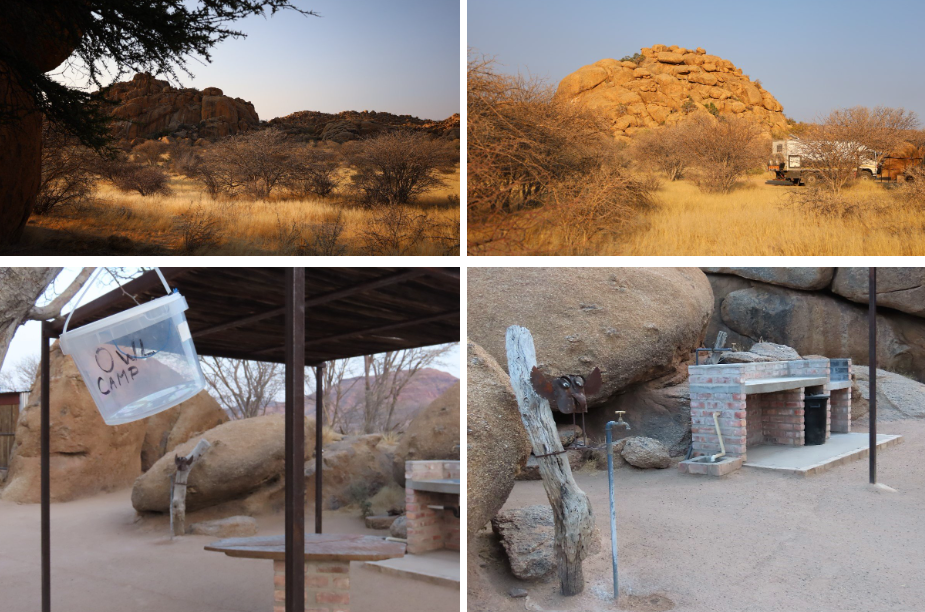
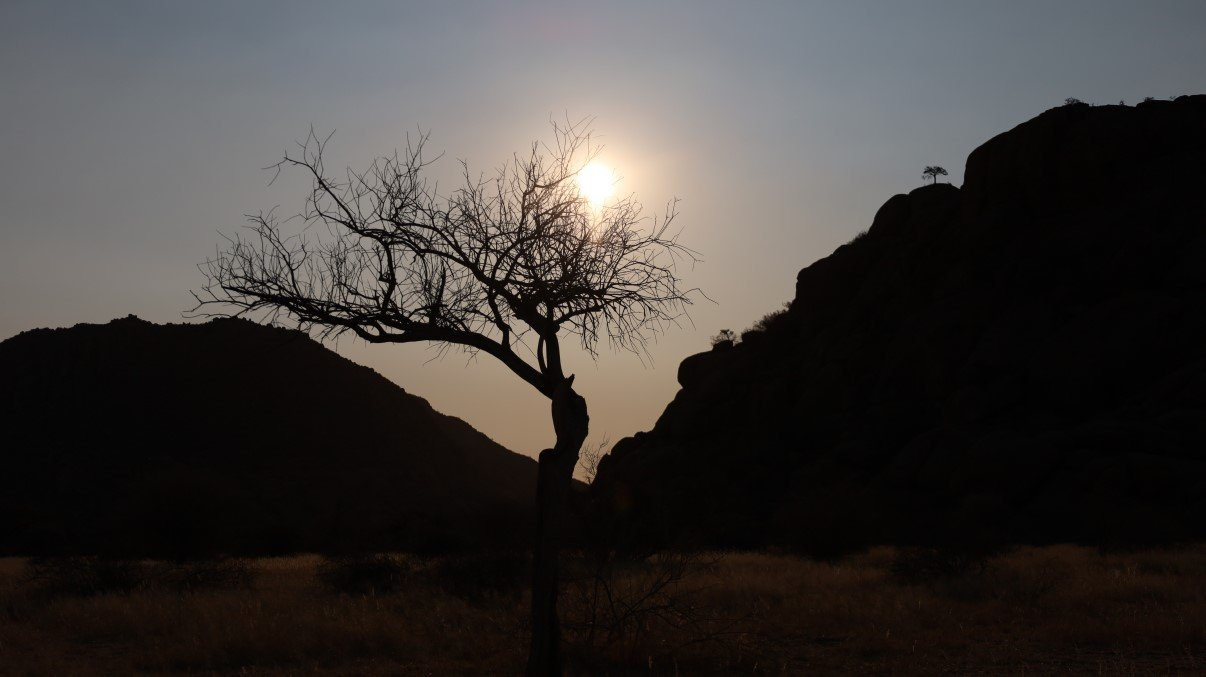
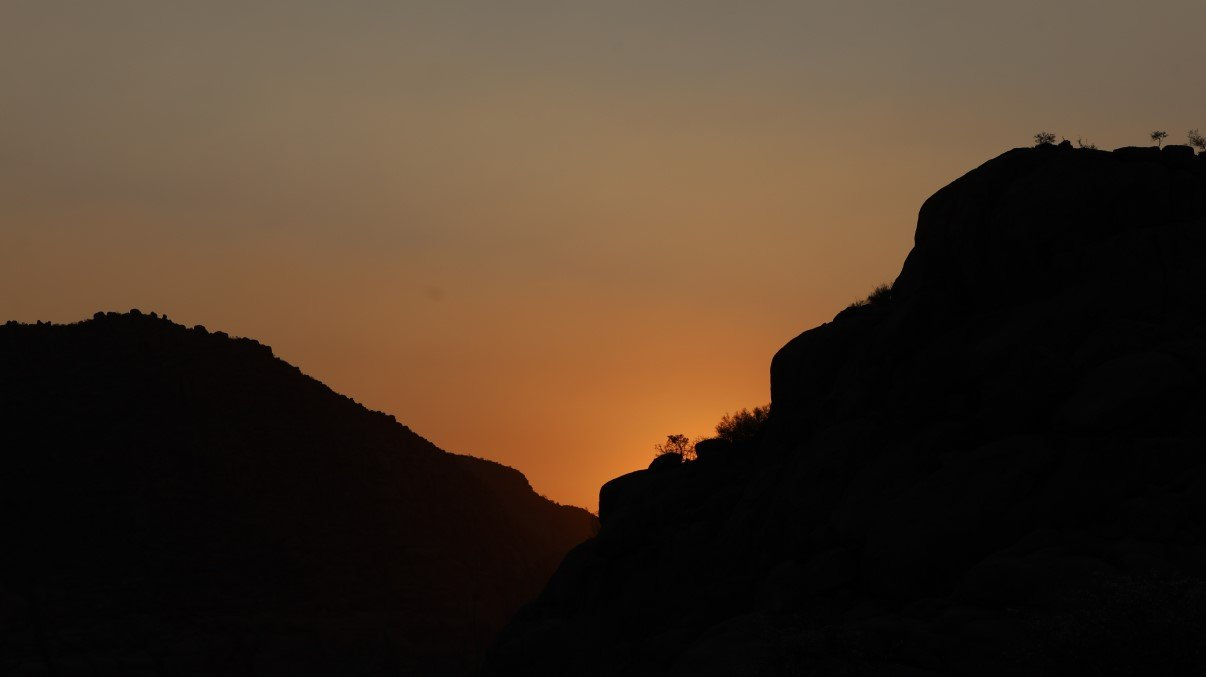
Next morning we went back to the San group and Demi showed us some other aspects of village life: the building of the hut and the importance of making fire in front of it to scare wildlife away. One of the other San guys showed how fast he could make a piece of rope from locally found fibrous plants, which they use for their bows and other uses around camp. This particular piece of demo-rope found a spot on Stefaans hat.
Demi showed how they put on ankle bracelets, made from seedpods, to create a sort of beat when they dance. Together with the ladies they performed a few dances.
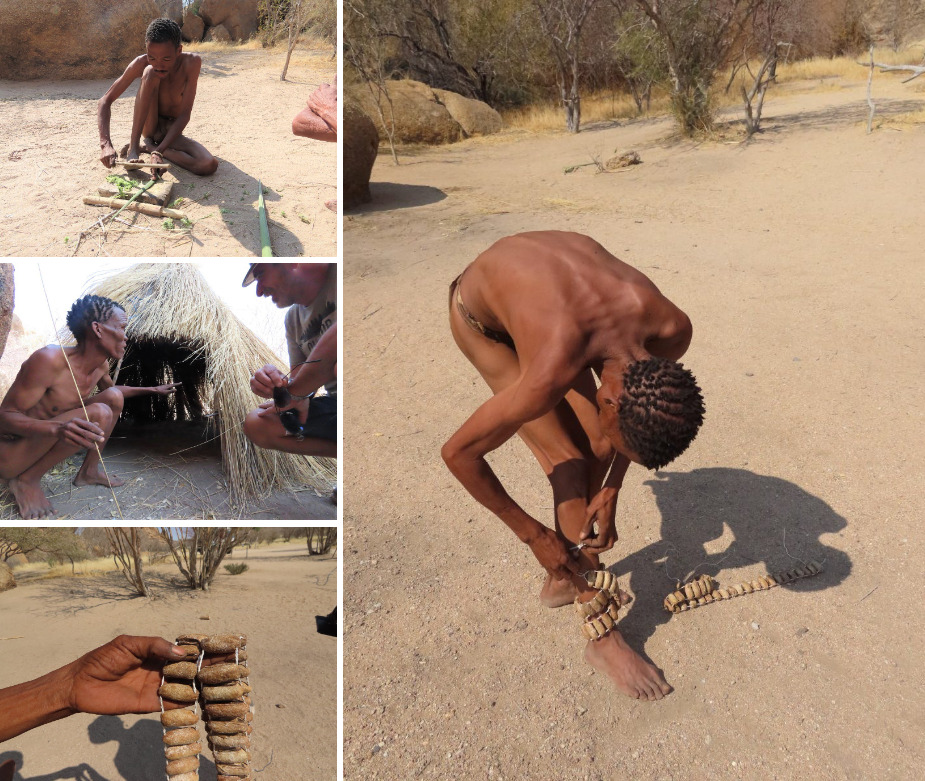
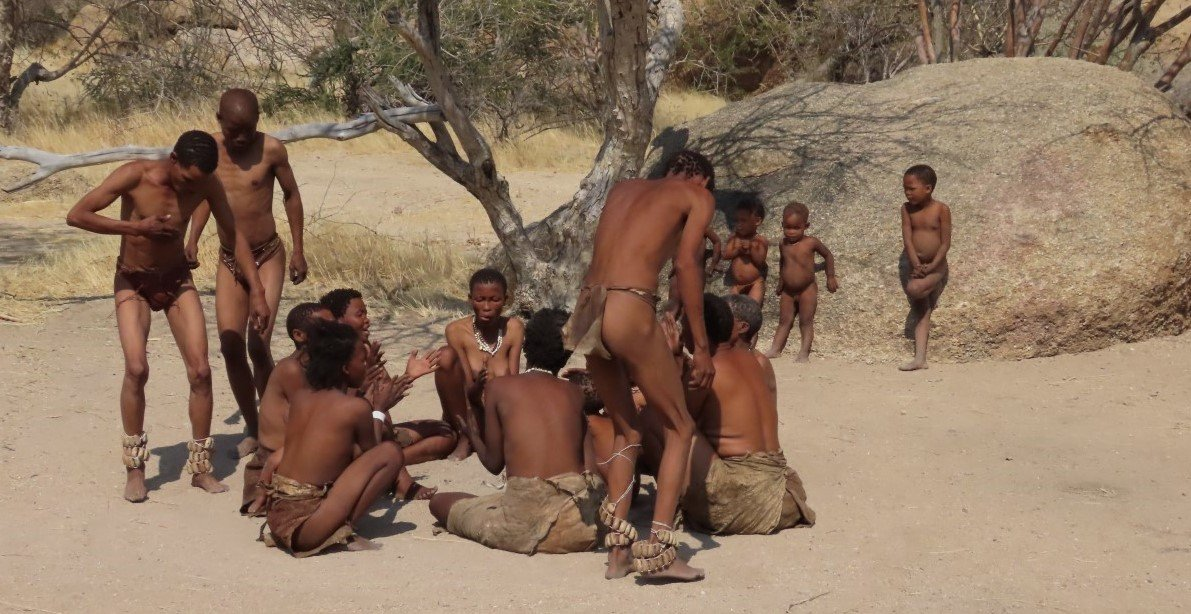
Besides income from the guided walks, the group also earns an income from jewellery the ladies make from ostrich egg shells and seeds. As I am not really wearing necklaces or bracelets, I asked if the ladies could make me earrings… which they did. For the remainder of our Namibian trip I have swopped my Jamaican kaki ‘travel’ earrings (r:pressie from my daughter) for my “bushman” earrings (l).The black parts of the earrings are burned ostrich shell. Stefaan bought a little carved elephant that found a spot on his hat.
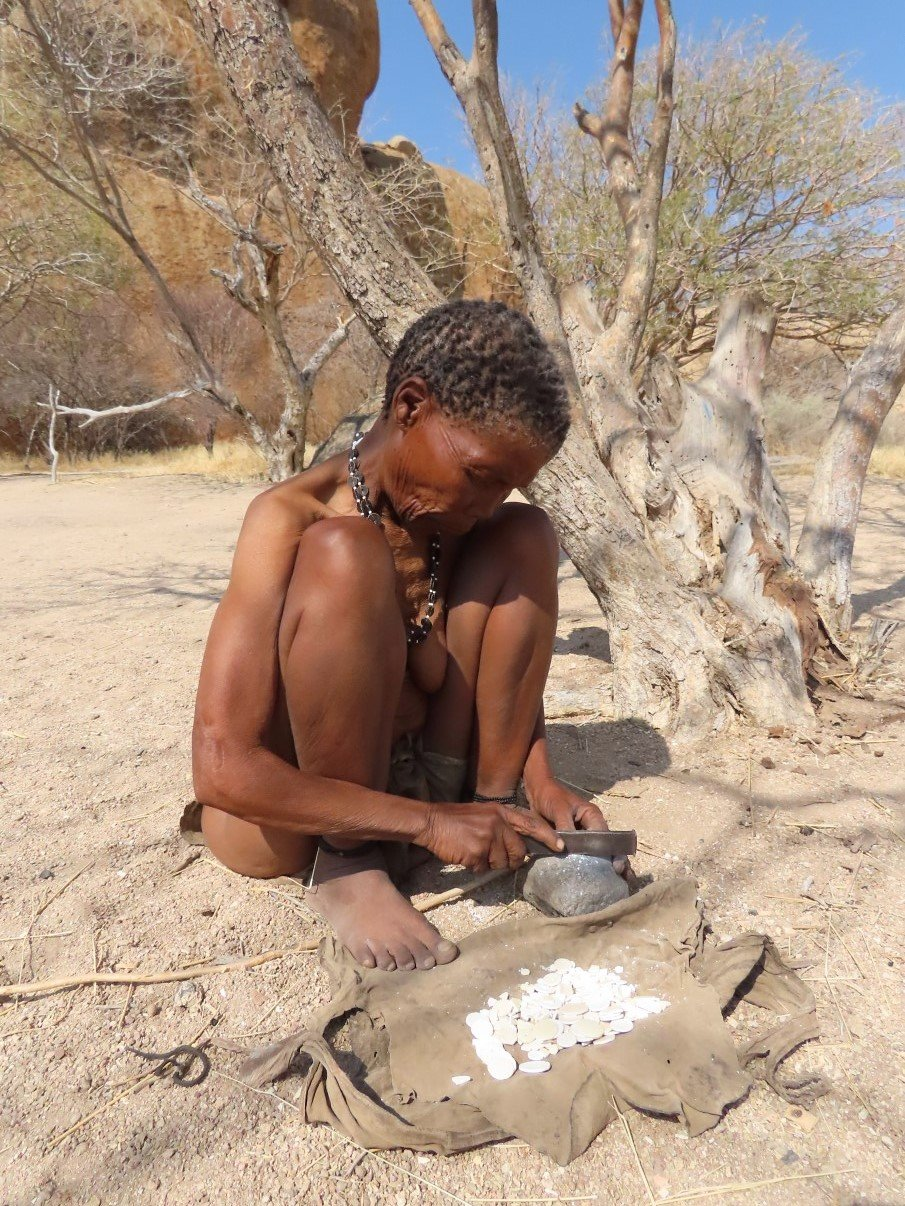
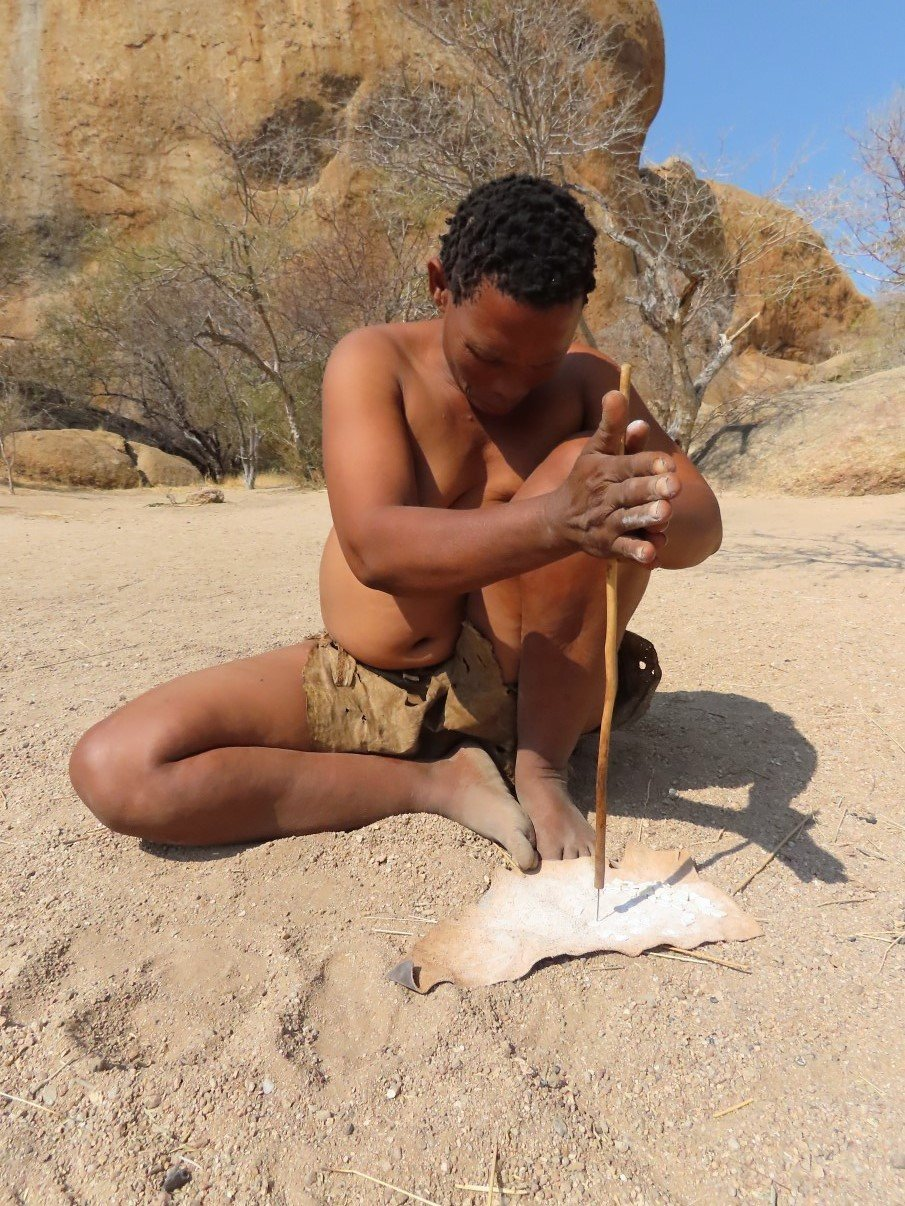
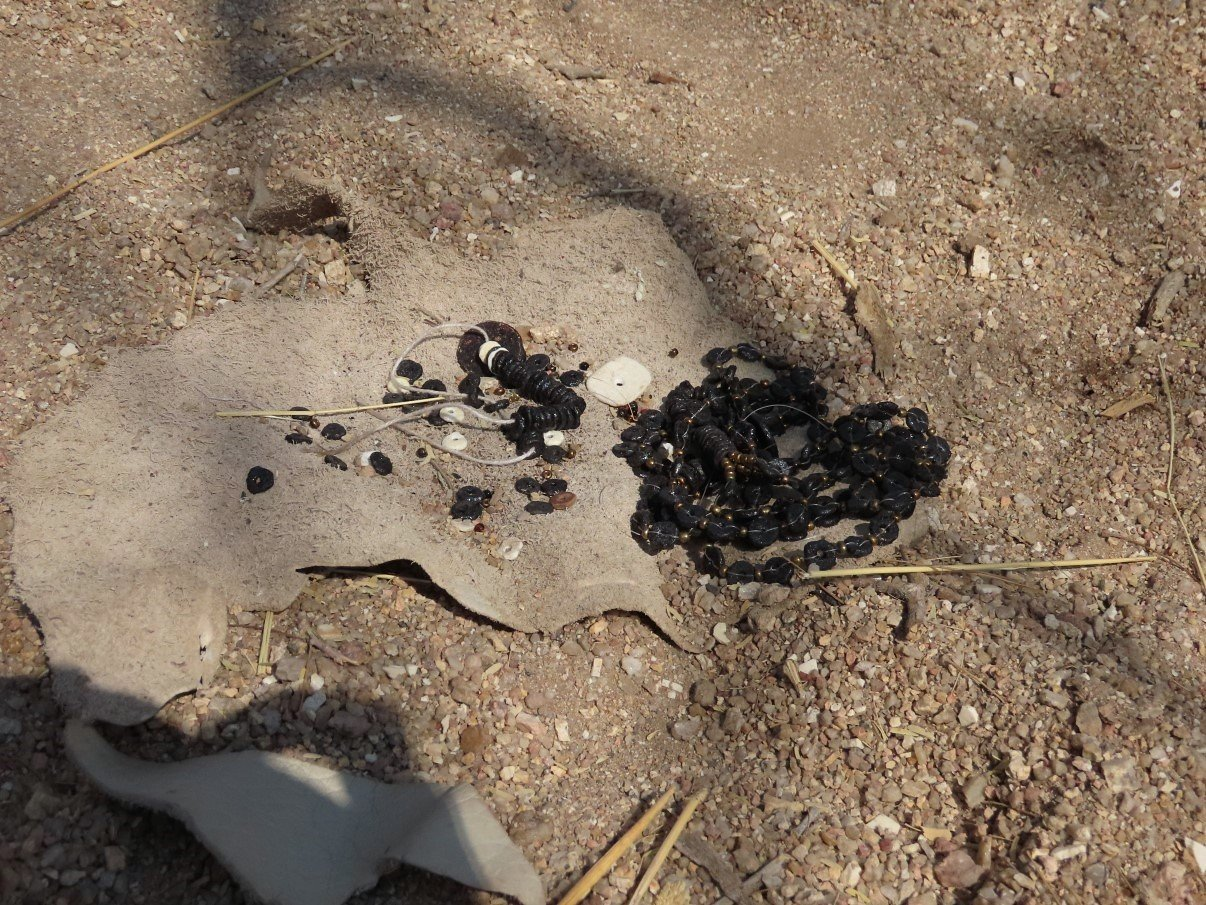
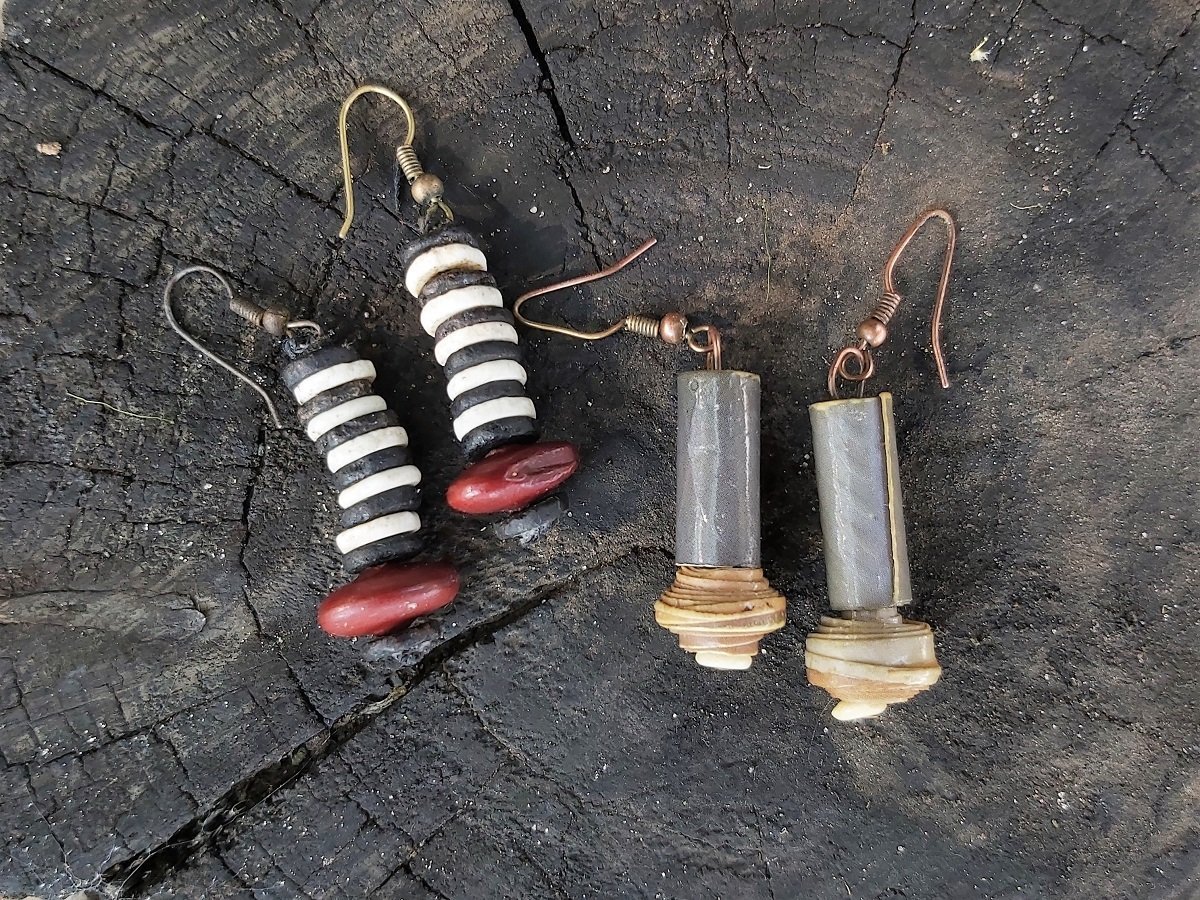
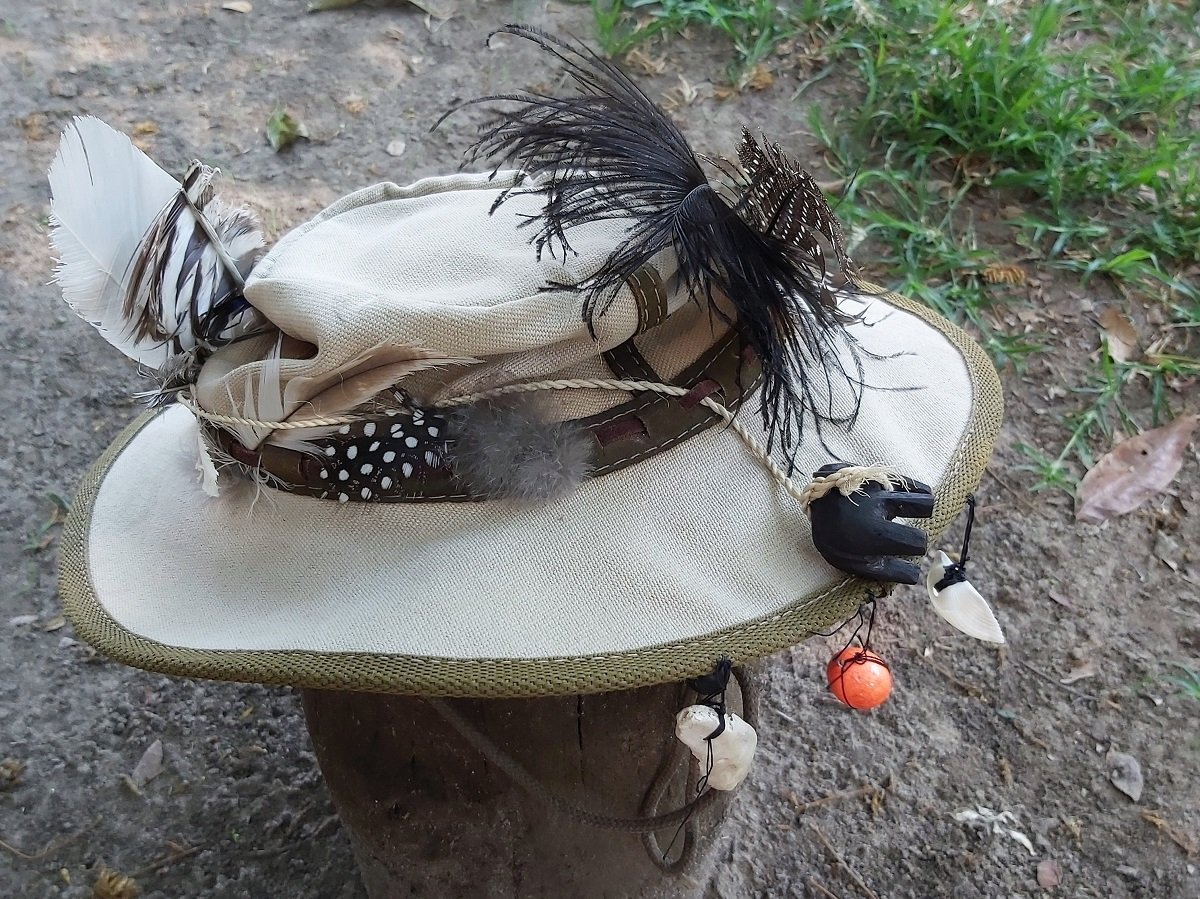
Although I asked Demi to translate a few things from English to Khoisan so I could say something personal to the ladies, the only thing I really remember (without having to look it up on Mr Google) is:
“MeWeAh” (my phonetic repeat of how Demi said it to me) which means Thank You.
So with this:
MEWEAH to the San group at Erongo!
Enjoy the video.
For more photos, clips and videos follow us on
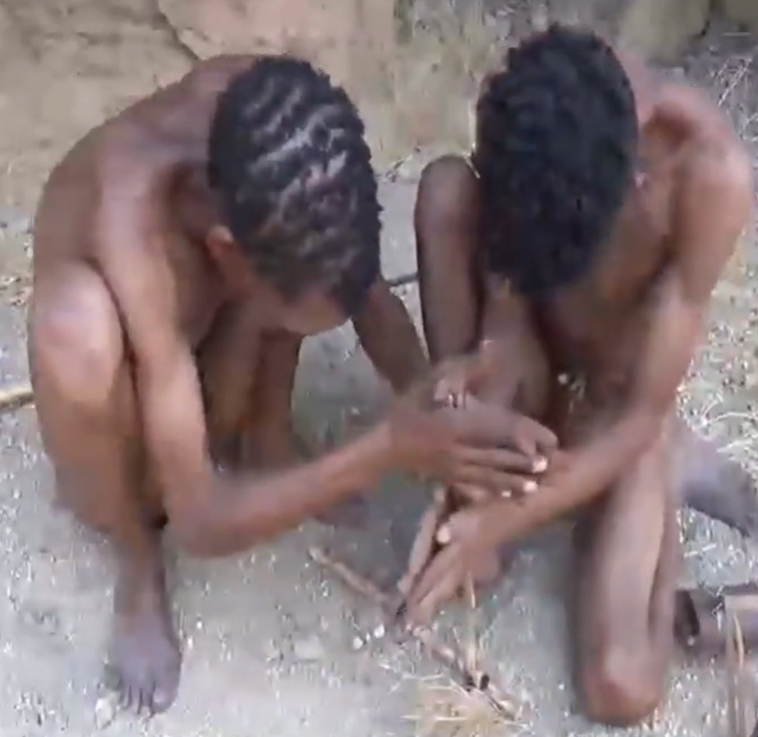
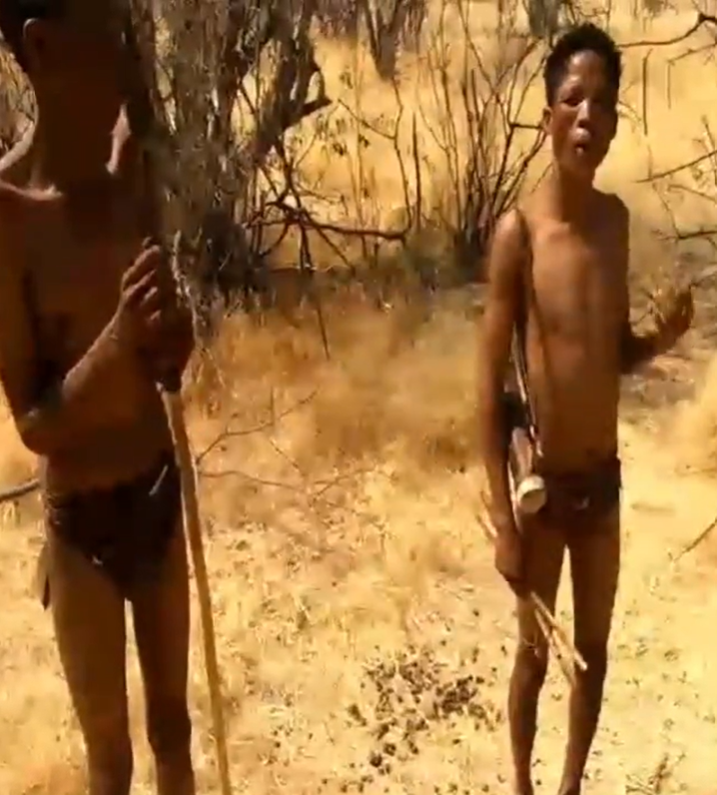


Erongo Mountains